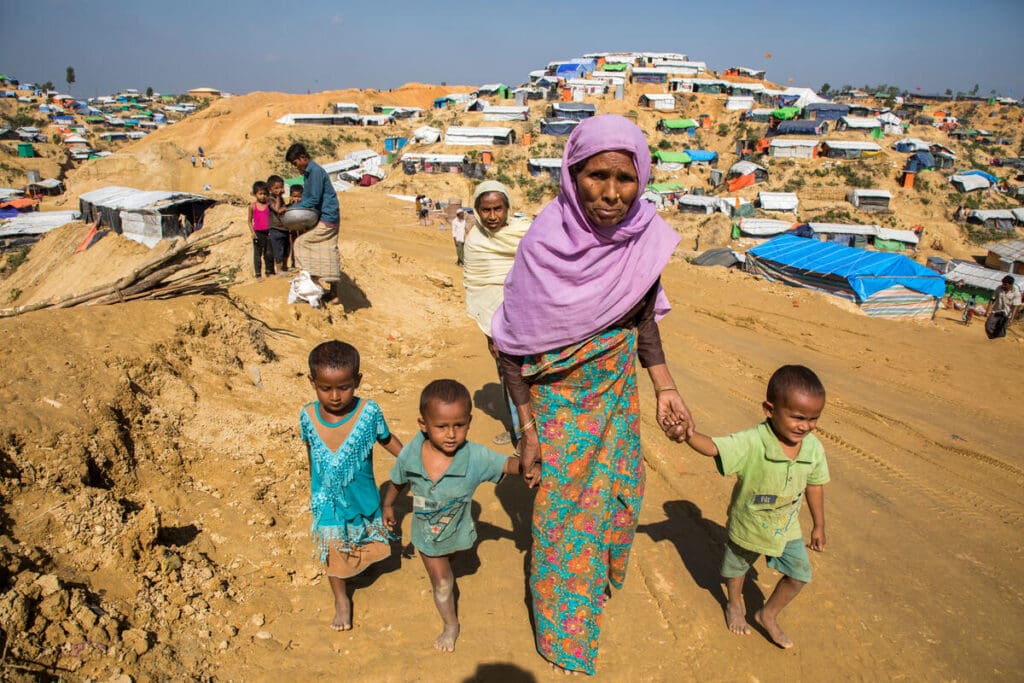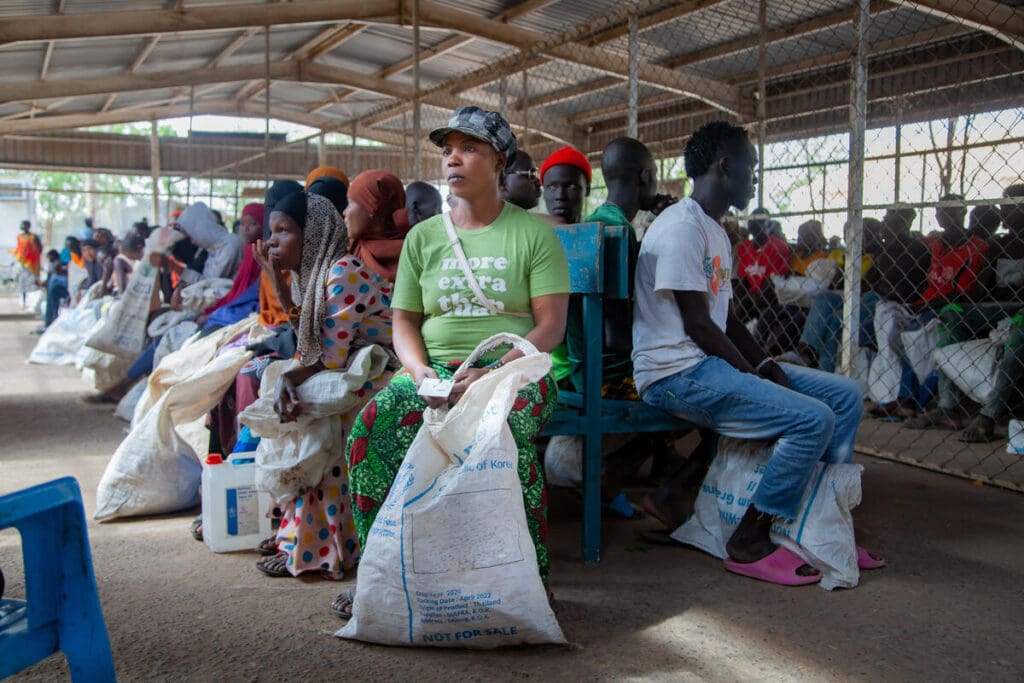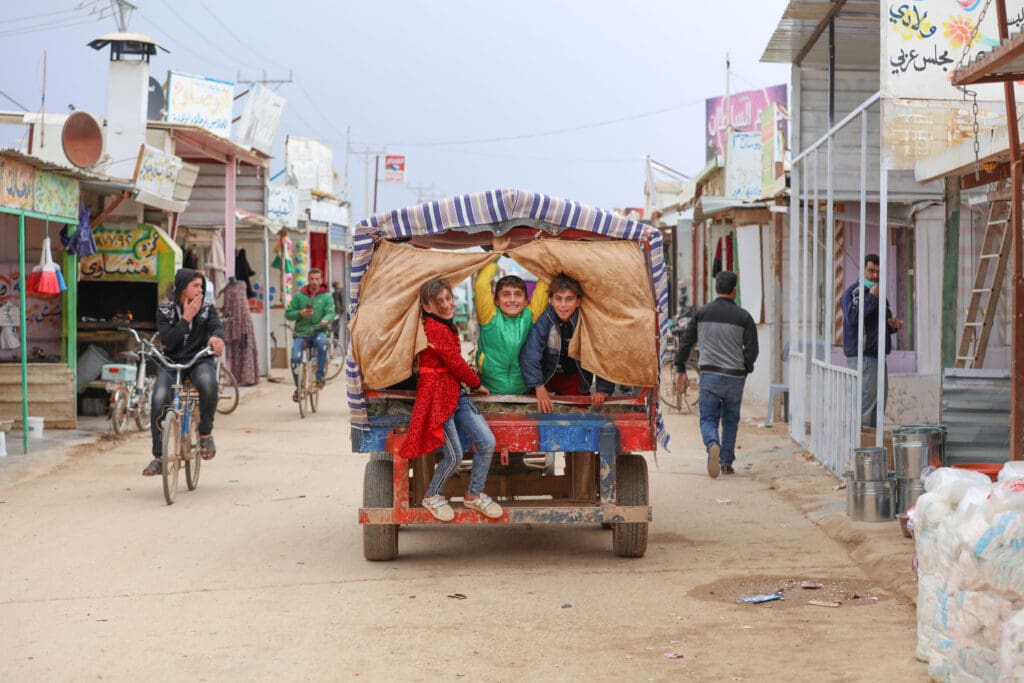Hunger in the 4 Largest Refugee Camps in the World

Refugee camps exist all over the world to help people who have been forced from their homes. These camps play a vital role in providing displaced people with temporary – and sometimes long-term – assistance.
According to the UN Refugee Agency, “Refugees are people who have fled war, violence, conflict or persecution and have crossed an international border to find safety in another country.” Refugees leave behind their homes, possessions, jobs and often their loved ones. Their journey to safety can be dangerous and does not end once they reach a refugee camp.
In camps, refugees face hunger, language barriers, unemployment and limited access to medical care. 6.6 million people – approximately 22% of the world’s refugee population, lives in refugee camps.
When there is a particularly devastating and extended crisis like the conflict in Syria, the population of refugee camps can grow quite large. Below, we take a look at the four largest refugee camps in the world and how the United Nations World Food Programme (WFP) works with other organizations to provide refugees with food.
Kutupalong in Cox’s Bazar, Bangladesh: 880,000 Refugees

Bangladesh is home to the largest refugee camp in the world – Kutupalong in Cox’s Bazar. About 880,000 Rohingya refugees live in the Kutupalong camp, the majority of whom fled from neighboring Myanmar in 2017 due to ethnic and religious persecution.
The Rohingya, who have been in Myanmar for centuries, have faced decades of discrimination and repression. They are one of the largest stateless populations in the world. Six years ago, hundreds of thousands of Rohingya streamed into Bangladesh to escape violence in Myanmar. Rohingya families continue to flee Myanmar but in smaller numbers.
Once refugees arrive at Kutupalong, they face another set of life-threatening challenges: Kutupalong is made up of a dense network of bamboo and tarpaulin shelters which puts refugees at high risk of fires that spread quickly throughout the camp. Cyclones and monsoons seasons start annually in the spring, and flooding and landslides threaten to wash away almost 10% of the camp’s tents. The COVID-19 pandemic shut down the local economy and disrupted supply chains.
The U.N. World Food Programme works tirelessly to provide food assistance to the vast majority of Rohingya refugees (nearly 1 million) in Cox’s Bazar through a range of programs including emergency nutrition assistance, livelihoods support and school meals. Half of refugees receive in-kind food assistance like rice, beans and fortified oil. The remaining half receive a WFP e-voucher pre-loaded with money refugees can use to buy a variety of food from WFP-contracted shops in the camps. Through learning centers in the camp, we also provide students with High-Energy Biscuits to keep children nourished and encourage their attendance.
Learn more about Kutupalong Camp in Cox’s Bazar >
Kakuma Refugee Camp in Kenya: 200,000 Refugees

The Kakuma Refugee Camp is located in the desert region of northwestern Kenya. The camp is sprawling and looks like a small city of thatched roof huts and tents. About 200,000 refugees reside in the camp, many of whom have lived there for more than 25 years after fleeing conflict and climate extremes in their home countries. These refugees are primarily from South Sudan, Sudan, Somalia, the Democratic Republic of the Congo, Burundi, Ethiopia and Uganda.
In Kakuma, refugees face relentless shocks from dust storms to high temperatures to malaria outbreaks.
Once admitted, refugees are required to remain in the camp under Kenyan law. This is why children entering the camp often stay into adulthood. Due to their legal situation and local environmental conditions, refugees in the Kakuma Camp are not able to support themselves. Agriculture is not possible due to the hot climate and employment limitations prevent refugees from finding work to support themselves.
Our assistance is vital for the majority of refugees living in Kenyan refugee camps like Kakuma. We provide food and cash assistance to people experiencing severe hunger in camps as well as school meals for children.
Dadaab Refugee Complex in Kenya: 200,000 Refugees

The Dadaab Complex is made up of three refugee camps in eastern Kenya: Hagadera, Dagahaley and IFO. The complex was initially created in 1991 to provide temporary shelter to people fleeing violence in Somalia and is managed today by UNHCR. These camps have developed into a group of small towns and even have centers of commerce that connect northeastern Kenya with southern Somalia.
In Dadaab and Kakuma camps, the U.N. World Food Programme provides over 500,000 refugees with a mix of cash and food assistance. However, a recent influx of new refugees from Somalia to Dadaab is putting strain on camps that are already at capacity. Funding is not keeping pace with these rising needs: Dadaab residents are currently receiving 80% of the usual rations from the U.N. World Food Programme.
Za’atari Refugee Camp in Jordan: 80,000 refugees

The Za’atari Refugee Camp opened in July 2012 and today houses 80,000 people. The camp is proof of the devastating, protracted refugee crisis in neighboring Syria. For many refugee children, Za’atari is the only home they have ever known.
4% of refugees in Za’atari have work permits, and women are often excluded from employment opportunities due to social norms. As a result, most Syrian families in Jordan rely on humanitarian aid to meet their daily needs. Hunger is a pressing issue: Over 80% of Syrian refugees in in Jordan either already hungry or teetering on the edge of hunger.
In Jordan, the U.N. World Food Programme meets the basic food needs of nearly 500,000 refugees (about the population of Atlanta, Georgia) with cash assistance and other programs. Through our cash-based assistance, refugees in Zaatari receive $32 each month through e-vouchers that are redeemable at locally contracted shops. However, the food security situation remains precarious: Between 2020 and 2021, the number of refugees experiencing hunger in Jordan doubled.
Learn more about the Syrian Refugee Crisis in Jordan >
WFP Helps Refugees and Other Displaced Populations
For millions of people worldwide, the U.N. World Food Programme’s assistance is the difference between life and death. Our timely intervention at times of heightened crisis helps pull people back from the brink of starvation.
We provide refugees with assistance at every step of their journey to safety. Refugee camps are a significant step on this journey. With your help, we can ensure refugees and other displaced persons worldwide have access to food.




